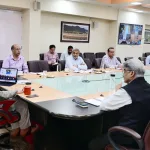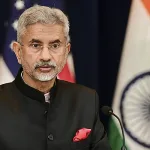The National Aeronautics and Space Administration (NASA), is responsible for unique scientific and technological achievements in human spaceflight, aeronautics, space science, and space applications that have had widespread impacts around the world. Forged in response to early Soviet space achievements, NASA was built on the National Advisory Committee for Aeronautics (NACA), and other government organizations, as the locus of U.S. civil aerospace research and development.
When NASA opened for business on October 1, 1958, it accelerated the work already started on human and robotic spaceflight. NASA’s first high profile program was Project Mercury, an effort to learn if humans could survive in space. This was followed by Project Gemini, which used spacecraft built for two astronauts to perfect the capabilities needed for the national objective of a human trip to the Moon by the end of the 1960s. Project Apollo achieved that objective in July 1969 with the Apollo 11 mission and expanded on it with five more successful lunar landing missions through 1972. After the Skylab and Apollo-Soyuz Test Projects of the mid-1970s, NASA’s human spaceflight efforts again resumed in 1981, with the Space Shuttle program that continued for 30 years. The Shuttle was not only a breakthrough technology, but was essential to our next major step in space, the construction of the International Space Station.
Over the last 60 years NASA has continued to push the boundaries with cutting edge aeronautics research that has dramatically changed the way we build and fly airplanes. NASA has also completed the reconnaissance of our solar system, with intense investigation of all the planets. Using orbital spacecraft like the Hubble Space Telescope, NASA has also dramatically changed our understanding of the universe around us, as well as our own planet. NASA’s early work on launch vehicles, communication satellites, and weather satellites has fundamentally changed daily life and created whole new industries.
As a catalyst for international cooperation, NASA has also changed how and why humanity conducts space exploration. Now, NASA is preparing to take humankind farther than ever before, as it helps to foster a robust commercial space economy near Earth, and pioneers further human and robotic exploration as we venture into deep space. For more than 60 years, NASA has pushed the boundaries of human exploration for the benefit of all, and now the agency’s influence and experience are fueling U.S. commercial industry’s growth in human spaceflight in low Earth orbit.
In the not-too-distant past, one had to be sponsored by a government to fly to space. Now, fully private crews strap into commercially owned and operated human space systems for both suborbital and orbital flights.
The United States gained decades of experience operating in space through NASA’s human spaceflight programs, innovation, and technology investments. The agency’s workforce understands very well what is required to complete complex missions in space, especially in low Earth orbit, and is tailoring its essential needs for crew safety through firm-fixed price contracts for major development programs – like the NASA’s Commercial Crew Program.
A spaceflight revolution took decades in the making and became possible because of several factors, including a decrease in cost and other barriers to entry as NASA sought to become an anchor customer for some missions, rather than building in-house.
In addition to the federal government’s strategic investments into commercial industry and focus on ensuring competition, successful entrepreneurs also were entering the market with the ability to self-finance, overcoming the funding barrier that had stopped so many of their predecessors. Through these efforts and more, it became possible for new companies to enter the market to make money and, most importantly, companies were looking for other business opportunities without the government as the main customer.
With commercial industry having greater competition, it accelerated all types of innovation because companies were building a business case, which included a significant focus on cost effectiveness and not just government contracts. Expanding the commercial human spaceflight market is important for NASA’s long-term goals of exploration near our home planet in low Earth orbit and in deep space, including the Moon and Mars.
NASA continues its transition of low Earth orbit to private industry, so the agency is just one customer of many. Commercial providers already carry out cargo and crew transportation to the International Space Station for NASA, and fully commercial destinations are in development for the end of the decade to ensure our continuous human presence in space.
The Commercial Low Earth Orbit Development Program represents one of NASA’s most significant commercial space opportunities for the next decade as It offers opportunities for the agency to continue its science and research for the benefit of all humanity, and it also offers industry a chance to develop business opportunities, like in space manufacturing, medical research, technology development, tourism, entertainment, and more.
Sustained investments in NASA technology advance the agency’s space exploration, science and aeronautics capabilities. NASA seeks to improve ability to access and travel through space; land more mass in more locations throughout the solar system; live and work in deep space and on planetary bodies; build next generation air vehicles, and transform the ability to observe the universe and answer profound questions in earth and space sciences. NASA technology development also supports the nation’s innovation economy by creating solutions that generate tangible benefits for life on earth. NASA is investing in the future of innovation.
NASA has selected 16 proposals from 12 companies under the 2022 Announcement of Collaboration Opportunity (ACO) to advance capabilities and technologies related to NASA’s Moon to Mars Objectives. The cadre of U.S. industry-led teams will test a new lunar rover tire design, develop a robotically assembled power system, build an electrically actuated device to join in-space propellant transfer lines, and more.
Under unfunded Space Act Agreements, NASA will provide access to its unique facilities and technical expertise, allowing the agency to directly support continued development of promising technologies without the transfer of funds.
(The author is a regular columnist and can be mailed at [email protected])





